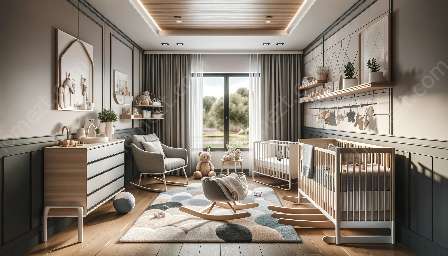When designing the layout for a playroom, it's essential to consider the optimal furniture arrangement. A well-organized playroom creates a comfortable and inviting space for children to play, learn, and grow. Additionally, the transition from nursery furniture placement to a multi-functional playroom should be seamless, allowing for a cohesive and functional space. In this article, we will explore the key components of an optimal furniture arrangement for a playroom that is compatible with nursery furniture placement and offers a seamless transition between the nursery and playroom areas.
Nursery Furniture Placement
Before transforming a nursery into a playroom or creating a shared space, it's essential to consider the existing nursery furniture placement. The layout of the nursery's furniture, including cribs, changing tables, and storage units, can influence the design of the playroom. It's important to evaluate the potential for repurposing existing nursery furniture as the child grows and their needs change. Flexible and adaptable furniture pieces, such as convertible cribs and adjustable shelving, can facilitate a smooth transition from nursery to playroom.
Multi-Functional Furniture for the Playroom
When selecting furniture for the playroom, prioritize multi-functional pieces that can accommodate various activities and storage needs. Flexible seating options, such as bean bags, poufs, and floor cushions, can easily transition from individual play to group activities. Additionally, consider incorporating modular storage units and bookshelves that can adapt to the changing needs of the playroom. These versatile furniture pieces can seamlessly integrate with nursery furniture placement, providing a cohesive and harmonious environment for children of all ages.
Zoning and Traffic Flow
Creating distinct zones within the playroom can optimize the use of space and enhance functionality. Consider defining areas for active play, quiet activities, reading nooks, and imaginative play. By strategically placing furniture and storage units, you can establish designated zones while maintaining a cohesive overall layout. Additionally, prioritize an open and accessible traffic flow to allow for easy movement between the nursery and playroom areas. Consider child-friendly furniture arrangements that promote safety and independence, ensuring that children can navigate the space with ease.
Interactive and Educational Furniture
Integrating interactive and educational furniture elements can enrich the playroom environment. Consider incorporating activity tables, art easels, and learning stations that encourage creativity, exploration, and cognitive development. These purposeful furniture pieces can complement nursery furniture placement and facilitate a seamless transition from early childhood to preschool years. Focus on creating a balanced environment that promotes both active play and educational opportunities within the playroom.
Personalization and Child-Centric Design
Ultimately, the optimal furniture arrangement for a playroom should reflect the individual interests and needs of the children who will use the space. Encourage personalization through child-centric design elements, such as themed play areas, display shelves for children's artwork, and cozy reading nooks. By involving children in the design process and considering their preferences, you can create a playroom that feels uniquely theirs while maintaining compatibility with nursery furniture placement.
Conclusion
Designing an optimal furniture arrangement for a playroom that is compatible with nursery furniture placement requires thoughtful consideration of multi-functional furniture, zoning, and child-centric design. By seamlessly integrating the transition from nursery to playroom, you can create a harmonious and inviting space for children to learn, play, and grow. With a focus on adaptability and creativity, the playroom can serve as a versatile environment that evolves with the changing needs and interests of the children it accommodates.


